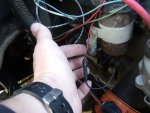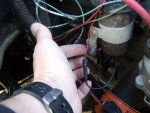Question about electrical
JimyB
Jeeper
- Posts
- 90
- Thanks
- 0
- Location
- Rosedale, Canada
- Vehicle(s)
- 94 YJ bare bones stock.
Newest Addition 86 CJ7
I am presently rewiring my 86CJ7 and have a question to ask anyone with the perverse and misunderstood ability to read wiring schematics. What the heck is the capacitor jumper for? I believe its that white thing attached to the firewall on the engine side. I have never seen it in any other vehicle and am wondering what it's purpose is.



